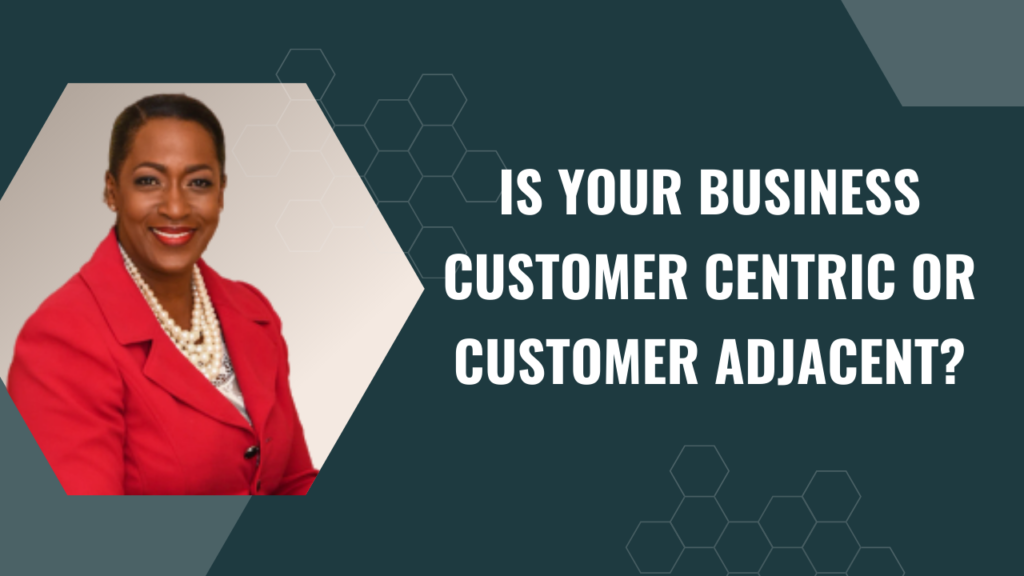If your business is “customer adjacent,” then your customers will experience outcomes that are average and guess what? Nobody raves about average (Bill Quiseng). So what do I mean when I say a “customer adjacent” business? I’m referencing those businesses that live in the duality of procrastination and action, where they talk a lot about wanting to improve their service, but yet do little or nothing to convert talk into action. They put off achieving service excellence for as long as they can, until they have no choice but to change. By this time it’s too late, customers would have defected, often dismissing the businesses in the court of social media opinion, on their way out.
I’m referencing those businesses that live in the duality of procrastination and action, where they talk a lot about wanting to improve their service, but yet do little or nothing to convert talk into action.
Businesses that are game changers and customer centric, do not live in duality. They do not alternate between procrastinating and making service improvements. These businesses are in the game and focussed on delivering stellar customer outcomes. As we speak, they are in the multiverse, carving out their presence on social media, making business transactions effortless and showing off their social conscience and real-world activism. Service momentum matters to them and it is measured in how effectively they accelerate their customer experience improvement strategies.
Take a closer look at these businesses and you’ll discover a unique and distinguishing feature. All of them have a grand opinion of themselves and this, in turn, influences their branding regime. Everything about how they operate is grand, unique and memorable. The interesting thing is that these businesses can be found in all sizes, micro, small, medium and large. Size does not matter when it comes to brand attitude.
Their brand attitude is wrapped around finesse and converting every overture to the customer, into a grand gesture. Recently, I bought a gift for someone and the salesperson offered to gift wrap it for me. Nothing unusual about this offer. What was impressive was the care that she took in making sure that the gift was carefully wrapped. Earlier, she acted as my gift and gift packaging consultant, offering suggestions about gift paper colours, as well as matching box and bow colours. She reflected the spirit of care and added finesse to a simple activity.
Size does not matter when it comes to brand attitude.
Businesses like this gift shop will never be found lurking anywhere near the “satisfied customer” mark. That’s because they do whatever is necessary to shorten the distance between knowledge and action. Their employees are wired around knowing and doing, so that everyone becomes a point of resolution. There is no tension between what the customer needs and how those needs will be met. This tension, however, is often the undoing of “customer adjacent” businesses. Employees take too long to deliver outcomes that meet (at a minimum), the customer’s expectations, so that the only customers who stay are those who are satisfied and not fussy about service.
Apart from the standard meaning of customer frequency (level of customer attendance), every business has another type of customer frequency. It’s the frequency that a business emits which attracts “like-minded” customers who identify with the service delivery style of the business. No need here to mention anything about high, low and medium frequencies.
This customer frequency runs from service excellence-obsessed at the upper end, to service-disconnected at the low end, with service-satisfying sitting in the middle. When a business is “customer adjacent,” its frequency lies between service-satisfying and service-disconnected. I don’t have to emphasize how critical it is for every business to know its customer frequency (level of customer attendance) and its customer frequency (on the scale).
A “customer adjacent” business has to keep retraining its employees in the “basics” of service delivery, because few ever graduate to “intermediate or advanced” levels.
A “customer adjacent” business has to keep retraining its employees in the “basics” of service delivery, because few ever graduate to “intermediate or advanced” levels. That’s because there’s no rigorous process for monitoring, coaching and measuring performance to ensure that employees implement what’s learned in training.
When employees are not under pressure to perform to meet the customer’s expectations and there are no significant sanctions for poor performance, the clear message becomes “You won’t get fired for delivering poor service.”
What all of this means, is that the existing level of service performance will deliver a corresponding level of business performance.

